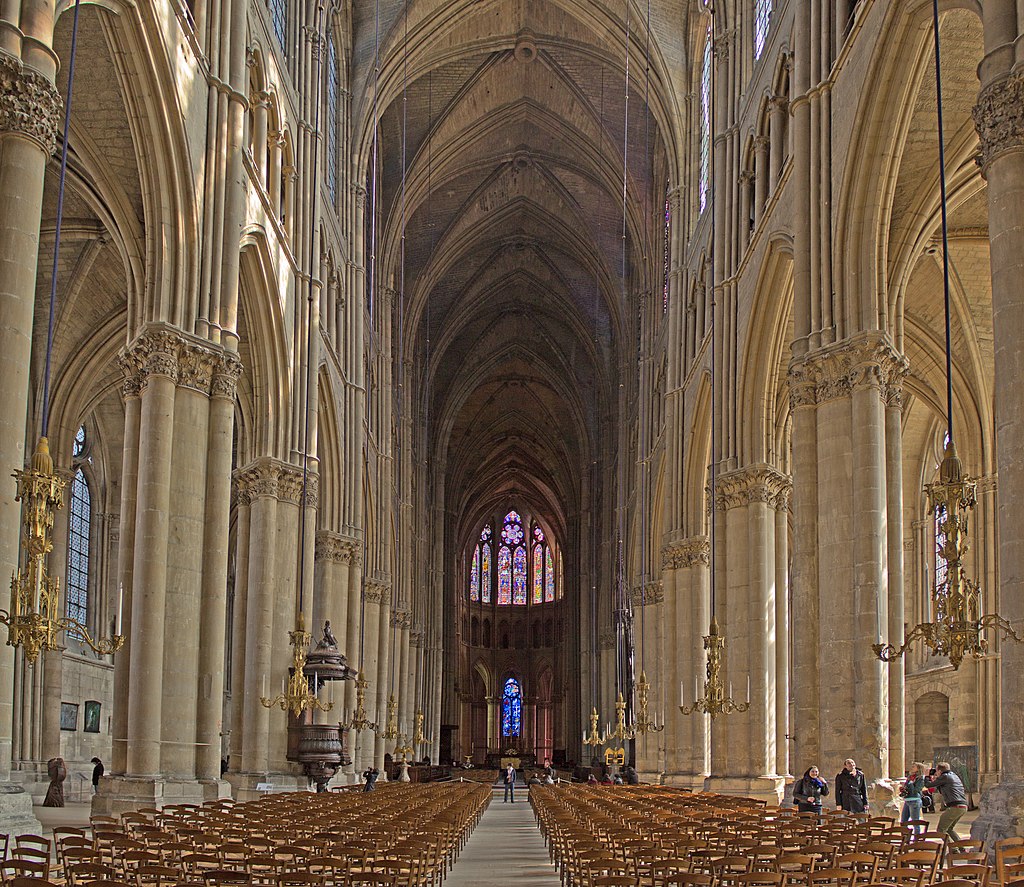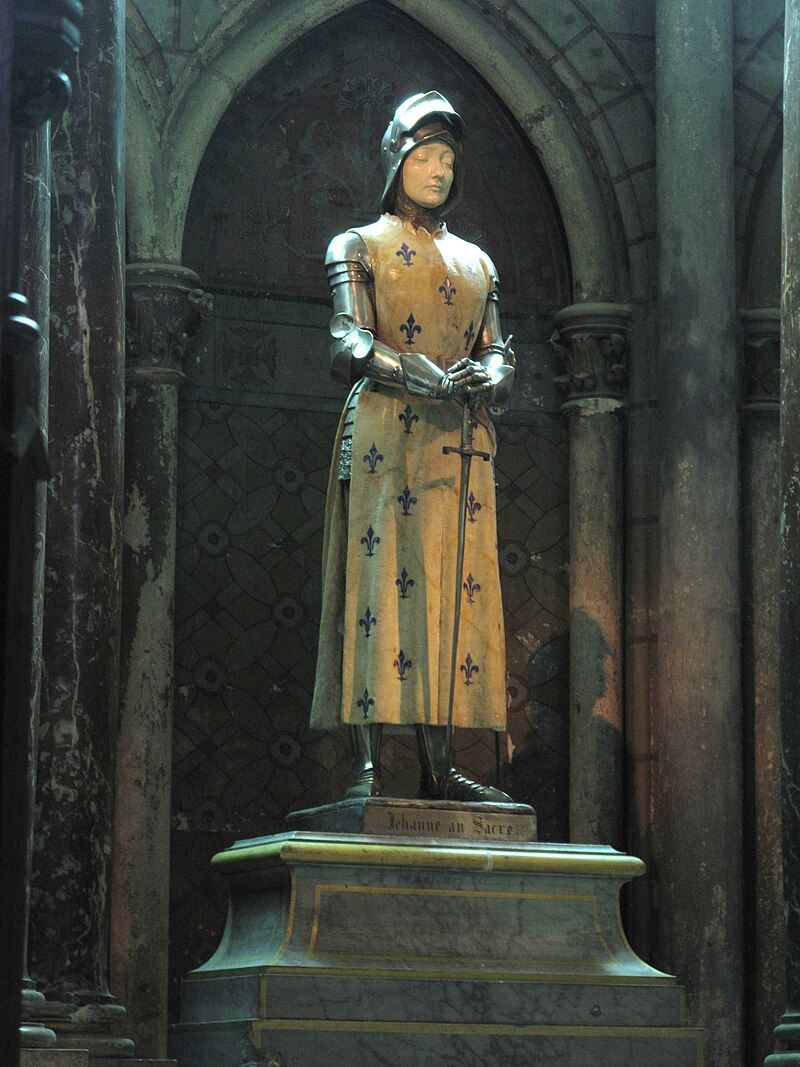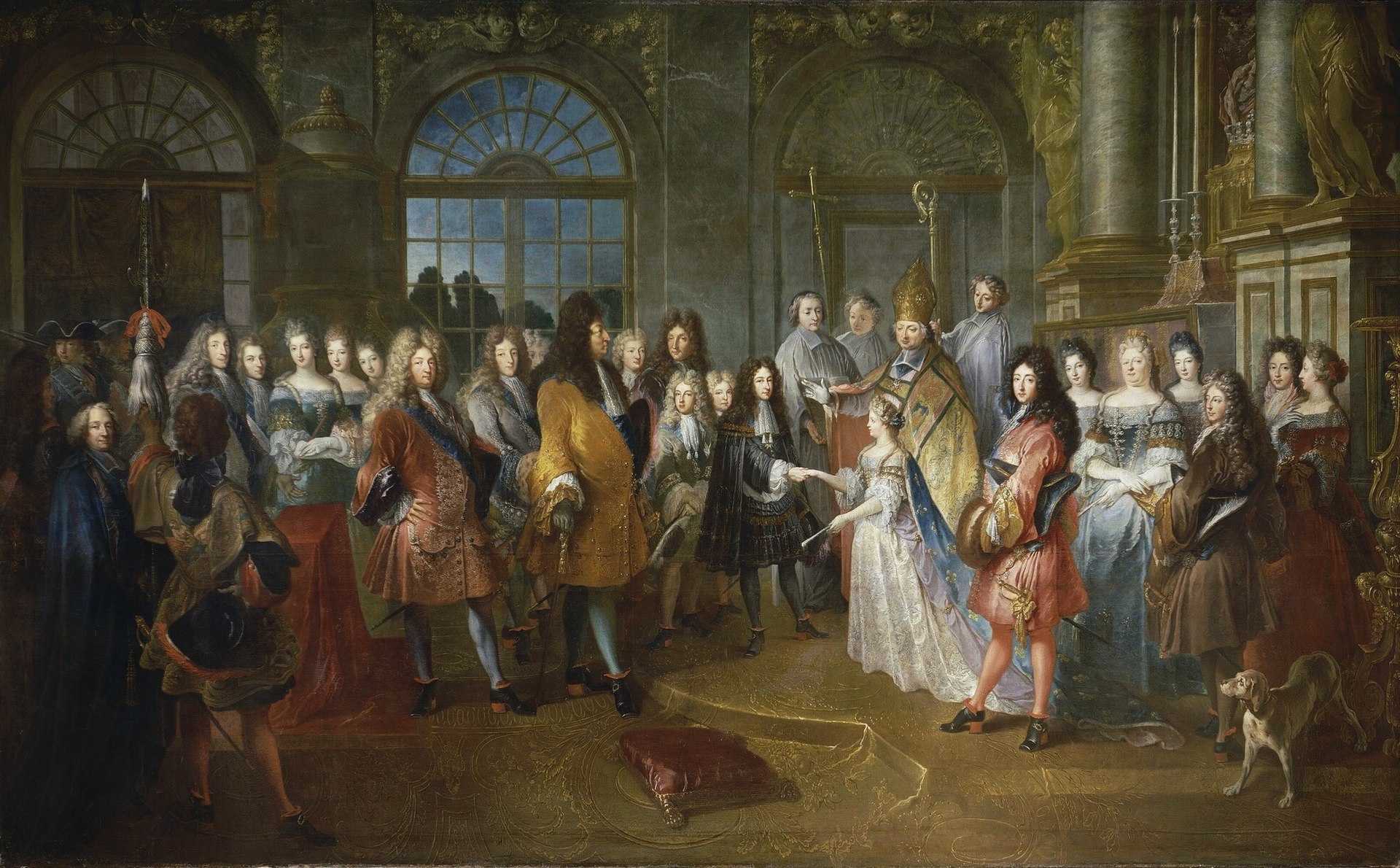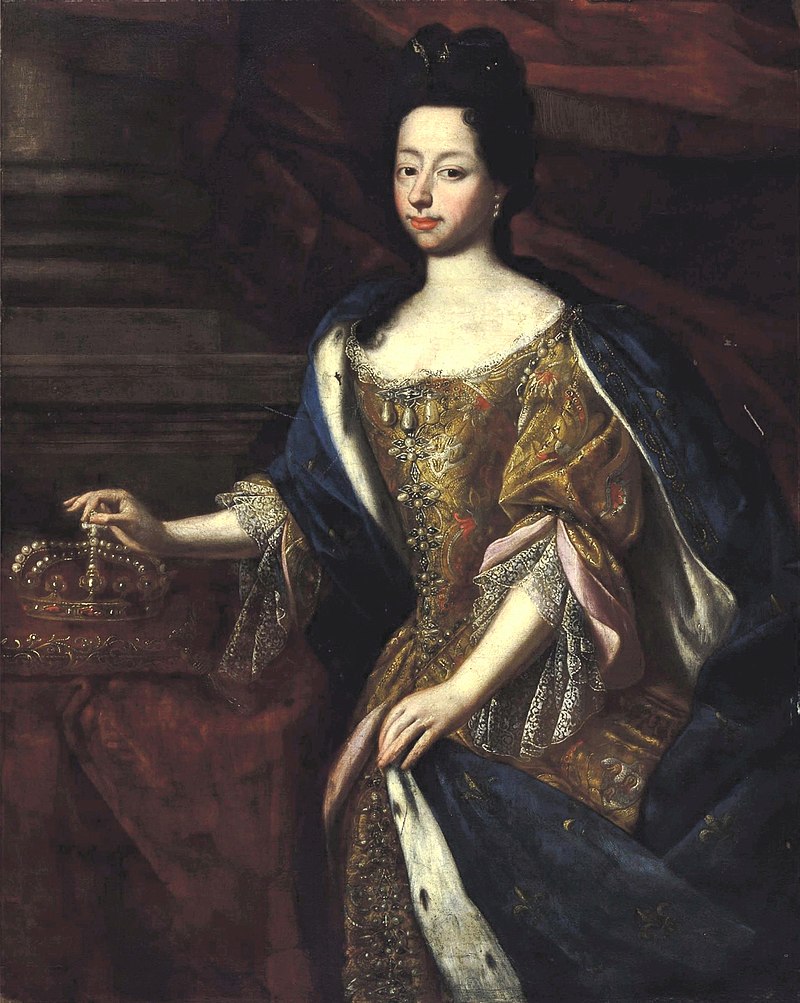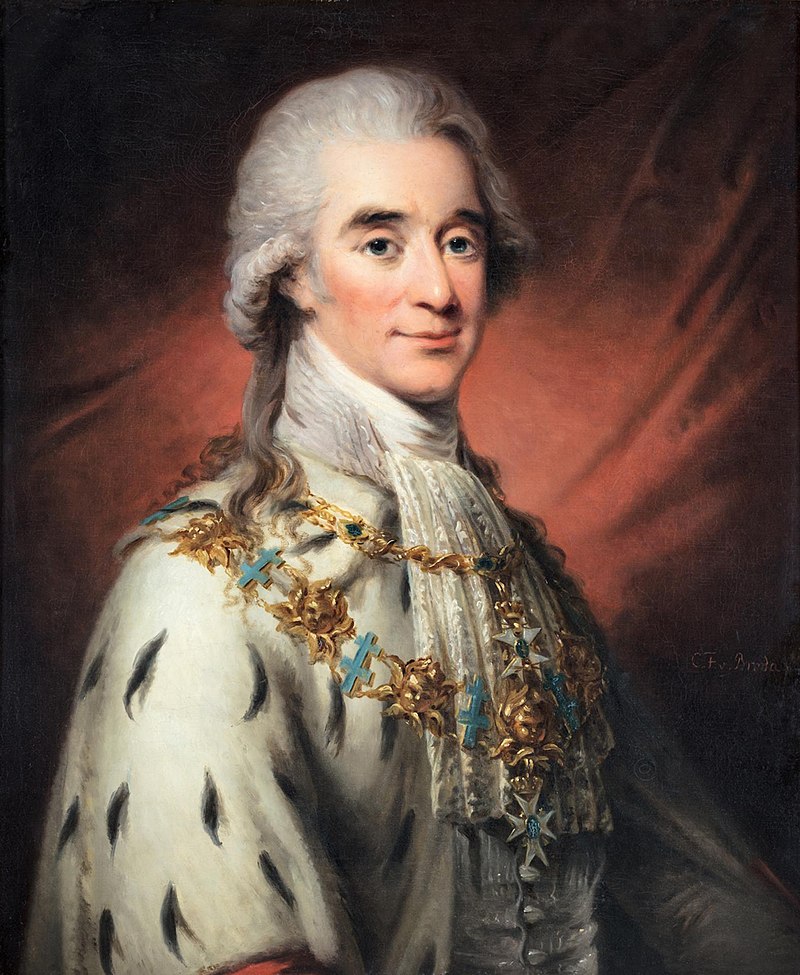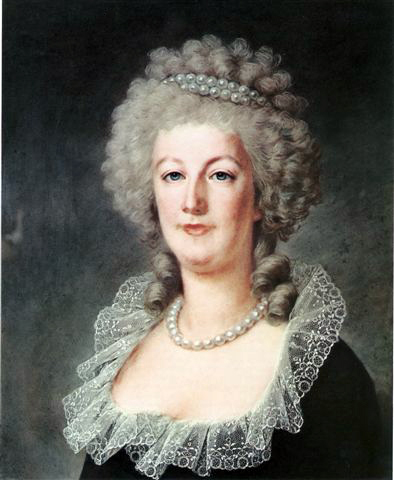by Susan Flantzer
© Unofficial Royalty 2022

Louis XIV, King of France (1638 – 1715)
(All media credits – Wikipedia unless otherwise noted)
Louis XIV, King of France was the longest-reigning French monarch, reigning for 72 years from 1643 until his death in 1715. He was born on September 5, 1638, at the Château de Saint-Germain-en-Laye, in Saint-Germain-en-Laye, France, the elder of the two sons of Louis XIII, King of France and Anne of Austria, Infanta of Spain. His paternal grandparents were Henri IV, the first King of France from the House of Bourbon, and his second wife Marie de’ Medici. Louis XIV’s maternal grandparents were Felipe III, King of Spain and Margaret of Austria. In 1660, Louis XIV married his double first cousin Maria Theresa of Austria, Infanta of Spain, daughter of King Felipe IV of Spain and Elisabeth of France. The couple had six children but only the eldest, Louis, Le Grand Dauphin, survived infancy or childhood, but he predeceased his father. Louis XIV had at least thirteen illegitimate children with his mistresses. Many of his children by his mistresses were legitimized and given titles.
Louis XIV was a firm believer in the divine right of kings. He became one of France’s most powerful sovereigns and established France as one of the leading powers in Europe. After the death of his wife in 1683, King Louis XIV married his mistress Françoise d’Aubigné, Marquise de Maintenon. Because the marriage was morganatic, she was never publicly acknowledged as his wife or as Queen.
After reigning for 72 years and 100 days, King Louis XIV died on September 1, 1715. He had outlived most of his immediate legitimate family. His only legitimate son to survive infancy, Louis, Le Grand Dauphin, had died in 1711. Barely a year later, Louis, Duke of Burgundy, Le Petite Dauphin, the eldest of Le Grand Dauphin’s three sons and then heir to Louis XIV, followed his father in death. The Duke of Burgundy’s elder surviving son Louis, Duke of Brittany joined them a few weeks later. Thus, on his deathbed, Louis XIV’s heir was his five-year-old great-grandson, Louis, Duke of Anjou, the Duke of Burgundy’s younger son, who succeeded his great-grandfather as King Louis XV.
Louis XIV, King of France had 30 paternal first cousins and 19 maternal first cousins which he shared with his only sibling Philippe I, Duke of Orléans.
********************
Paternal Aunts and Uncles: Children of Henri IV, King of France and his second wife Marie de’ Medici
- Elisabeth of France, Queen of Spain (1602 – 1644), married Felipe IV, King of Spain, had eight children
- Christine Marie of France, Duchess of Savoy (1606 – 1663), married Vittorio Amedeo I, Duke of Savoy, had seven children
- Nicolas Henri of France, Duke of Orléans (1607 – 1611), died in childhood
- Gaston of France, Duke of Orléans (1608 – 1660), married (1) Marie de Bourbon, Duchess de Montpensier, had one daughter (2) Marguerite of Lorraine, had five children
- Henrietta Maria of France, Queen of England (1609 – 1669), married Charles I, King of England, had nine children
Maternal Aunts and Uncles: Children of Felipe III, King of Spain and Archduke Margaret of Austria
Note: Felipe III’s children were known as “of Austria” because the Spanish monarchs at the time were members of the House of Habsburg
- Maria of Austria, Infanta of Spain (born and died 1603), died in infancy
- Felipe IV, King of Spain (1605 – 1665), married (1) Elisabeth of France, had eight children (2) Mariana of Austria, had five children
- Maria Anna of Austria, Infanta of Spain, Holy Roman Empress (1606 – 1646), married Ferdinand III, Holy Roman Emperor, had six children
- Carlos of Austria, Infante of Spain (1607 – 1632), unmarried
- Ferdinand of Austria, Infante of Spain, Cardinal-Deacon of Santa Maria in Portico (1609 – 1641), unmarried
- Margarita of Austria, Infanta of Spain (1610 – 1617), died in childhood
- Alonso of Austria, Infante of Spain (1611 – 1612), died in infancy
********************
Paternal First Cousins
Paternal First Cousins: Children of Princess Elisabeth of France and Felipe IV, King of Spain
Maria Margarita of Austria, Infanta of Spain (born and died 1621)
Maria Margarita was born on August 14, 1621, and died the next day.
********************
Margarita Maria Caterina of Austria, Infanta of Spain (born and died 1623)
Margarita Maria Caterina was born on November 25, 1623, and died on December 22, 1623.
********************
Maria Eugenia of Austria, Infanta of Spain (1625 – 1627)
Maria Eugenia was born on November 21, 1625, and died on August 21, 1627.
********************
Isabella Maria Theresa of Austria, Infanta of Spain (born and died 1627)
Isabella Maria Theresa was born on October 31, 1627, and died the next day.
********************

Balthasar Carlos of Austria, Infante of Spain, Prince of Asturias (1629 – 1646)
Balthasar Carlos was the heir apparent to the Spanish throne until his death. He died from smallpox at the age of sixteen on October 9, 1646.
********************
Francisco Fernando of Austria, Infante of Spain (born and died 1634)
Francisco Fernando died on the day of his birth, March 12, 1634.
********************
Maria Anna Antonia of Austria, Infanta of Spain (born and died 1636)
Maria Anna Antonia was born on January 17, 1636, and died on December 5, 1636.
********************

Maria Theresa of Austria, Infanta of Spain, Queen of France (1638 – 1683)
Maria Theresa married her double first cousin, Louis XIV, King of France. The youngest of eight children, she was the only one of her siblings to reach adulthood. Maria Theresa and Louis XIV had six children but only the eldest, Louis, Le Grand Dauphin, survived to adulthood, but he predeceased his father. Maria Theresa was very devout, often inviting members of the King’s court to come and pray with her. Intensely private, she was humiliated by her husband’s numerous, and very public, affairs and his man illegitimate children.
********************
Paternal First Cousins: Children of Princess Christine Marie of France and Vittorio Amedeo I, Duke of Savoy
Prince Luigi Amadeo of Savoy (1622 – 1628)
Luigi Amedeo died in childhood.
********************

Princess Luisa Cristina of Savoy (1629 – 1692)
Upon the death of her father in 1637 a dispute arose between Luisa Cristina’s mother Christine Maria and paternal uncles Prince Tommaso of Savoy and Cardinal-Prince Maurizio of Savoy over the appointment of a regent and the inheritance of the duchy. The two brothers conspired against Christine Marie as regent, claiming the regency between the two of them. Eventually, with the help of her brother King Louis XIII of France, Luisa Cristina’s mother Christine Marie became Regent for her five-year-old son Francesco Giacinto, Duke of Savoy and when he died in 1638, she became Regent for her other son Carlo Emanuele II, Duke of Savoy. Luisa Cristina was soon engaged to Maurice as part of a reconciliation with Christine Marie. To appease her 49-year-old uncle Maurizio, 13-year-old Luisa Cristina was married to him in 1642. Maurizio had left the clergy earlier that year. Luisa Cristina and Maurizio had no children. Maurizio died in 1657 from a stroke leaving Luisa Cristina a widow at the age of twenty-seven.
********************

Francesco Giacinto, Duke of Savoy (1632 – 1638)
Upon the death of his father, Francesco Giacinto was Duke of Savoy from 1637 to 1638 under the regency of his mother Christine Marie. On October 4, 1638, six-year-old Francesco Giacinto died from a fever.
********************

Carlo Emanuele II, Duke of Savoy (1634 – 1675)
In 1638 at the death of his older brother six-year-old brother Francesco Giacinto, Duke of Savoy, four-year-old Carlo Emanuele became the Duke of Savoy under the regency of his mother Christine Marie. Even after he reached the age of majority, he allowed his mother to continue ruling for him. Carlo Emanuele preferred a life of pleasure. Only upon the death of his mother in 1663, did Carlo Emanuele, at the age of 29, assume power. He wanted to marry Marie Jeanne Baptiste of Savoy-Nemours but his mother disagreed and encouraged him to marry his cousin Françoise Madeleine d’Orléans, daughter of his maternal uncle Gaston, Duke of Orléans. He did so in 1663. Later that year, Christine Marie died and then Françoise Madeleine died in 1664. In 1665, Carlo Emanuele married Marie Jeanne Baptiste of Savoy-Nemours, and they had one son, Vittorio Amedeo II, who became the first King of Sardinia.
********************

Princess Margherita Yolande of Savoy, Duchess of Parma (1635 – 1663)
Margherita Yolande’s mother Christine Marie began a correspondence with the French court to secure a marriage between Margherita Yolande and her first cousin King Louis XIV of France. However, Cardinal Mazarin, the chief minister to Louis XIII and Louis XIV, convinced Louis XIV to marry another first cousin Maria Theresa of Austria, Infanta of Spain, for political reasons. Instead, Margherita Yolande married Ranuccio II Farnese, Duke of Parma in 1660. The couple had two children who both died: the first was a stillborn daughter and the second was a son who live only one day. Sadly, Margherita Yolande died while giving birth to her second child.
********************

Princess Enrichetta Adelaide of Savoy, Electress of Bavaria (1636 – 1676)
Enrichetta Adelaide and her sister Caterina Beatrice were twins but Caterina Beatrice died when she was nine months old. In 1650, fourteen-year-old Enrichetta Adelaide married fourteen-year-old Ferdinand Maria, Hereditary Prince of the Electorate of Bavaria. The following year, Ferdinand Maria became Elector of Bavaria upon the death of his father. Enrichetta Adelaide and Ferdinand Maria had seven children including Maria Anna Victoria of Bavaria who married her second cousin Louis, Le Grand Dauphin of France, the only surviving child of Louis XIV, King of France and Maria Theresa of Austria, Infanta of Spain.
********************
Princess Caterina Beatrice of Savoy (1636 – 1637)
Caterina Beatrice was the twin of Enrichetta Adelaide. She was born on November 6, 1636, and died on August 26, 1637.
********************
Paternal First Cousins: Children of Gaston of France, Duke of Orléans and his first wife Marie de Bourbon, Duchess de Montpensier

Princess Anne Marie Louise d’Orléans, Duchess of Montpensier (1627 – 1693)
In 1626, Prince Gaston of France, Duke of Orléans was married against his will to the immensely wealthy Marie de Bourbon, Duchess of Montpensier in her own right. On May 29, 1627, Marie gave birth to a daughter and then died a few days later due to childbirth complications. Her infant daughter Anne Marie Louise inherited her mother’s fortune and titles. Known as the Grande Mademoiselle, Anne Marie Louise never married and when she died in 1693, she left her fortune to her first cousin Philippe I, Duke of Orléans, King Louis XIV’s only sibling.
********************
Paternal First Cousins: Children of Prince Gaston of France, Duke of Orléans and his second wife Marguerite of Lorraine

Princess Marguerite Louise d’Orléans, Grand Duchess of Tuscany (1645 – 1721)
In 1661, Marguerite Louise married Cosimo III de’ Medici, the future Grand Duke of Tuscany. The couple had three children but the marriage was not a happy one. In June 1675, Marguerite Louise and her husband separated and she retired with a pension to a convent on the outskirts of Paris that housed noble ladies separated from their husbands. She died in 1721 without ever again seeing her husband, who died two years later.
********************

Princess Élisabeth Marguerite d’Orléans, Duchess of Guise (1646 – 1696)
In 1667, Élisabeth Marguerite married Louis Joseph de Lorraine, Duke of Guise and the couple had one son who died at the age of four. In 1671, returning from a visit to the court of Charles II, King of England, Louis Joseph fell ill with smallpox and died. Élisabeth Marguerite never remarried.
********************
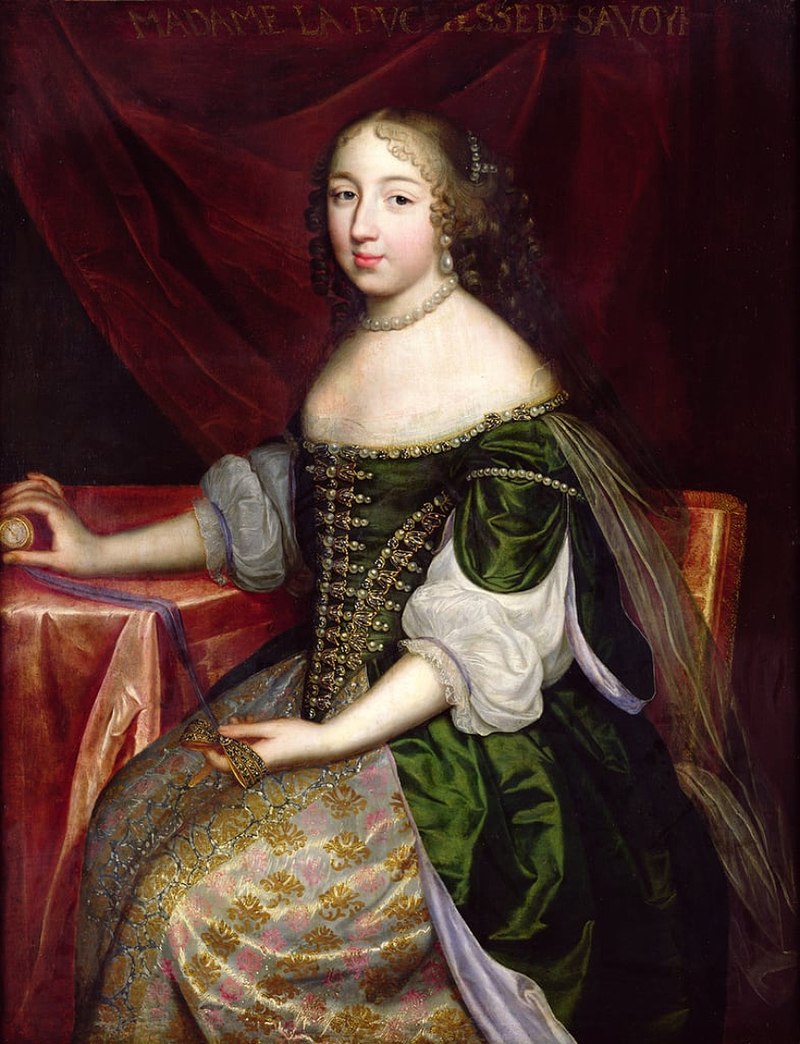
Princess Françoise Madeleine d’Orléans, Duchess of Savoy (1648 – 1664)
In 1663, influenced by her paternal aunt Christine Marie, Dowager Duchess of Savoy, Françoise Madeleine was married to her first cousin Carlo Emanuele II, Duke of Savoy. Françoise Madeleine died unexpectedly on January 14, 1664, aged fifteen.
********************
Prince Jean Gaston d’Orléans, Duke of Valois (1650 – 1652)
The only son in the family, Jean Gaston had very frail health and was never able to walk or speak. He died from diarrhea a week short of his second birthday.
********************
Princess Marie Anne d’Orléans (1652 – 1656)
Born on November 9, 1652, Marie Anne died at the age of three on August 17, 1656.
********************
Paternal First Cousins: Children of Princess Henrietta Maria of France and Charles I, King of England
Prince Charles James of England, Duke of Cornwall and Rothesay (born and died 1629)
Charles James was born prematurely on May 13, 1629, after his mother had been frightened by a large dog jumping at her. He died the same day as his birth.
********************

Charles II, King of England (1630 – 1685)
Charles II was still young when the English Civil War broke out between his father King Charles I and the Parliamentarian and Puritan forces. The execution of King Charles I on January 30, 1649, made Charles the de jure King. Charles lived in exile until 1660, when Parliament formally invited him as King Charles II, to be the English monarch in what has become known as the Restoration. In 1662, Charles married Catherine of Braganza, the daughter of King João IV of Portugal. Despite fathering many illegitimate children with his mistresses, Charles had no children with Catherine. It is thought that Catherine did have at least three miscarriages.
********************

Mary, Princess Royal, Princess of Orange (1631 – 1660)
Mary was the first Princess Royal. Her mother Queen Henrietta Maria, daughter of King Henri IV of France, wanted to imitate the way the eldest daughter of the King of France was styled Madame Royale. In 1641, nine-year-old Mary married Willem, Hereditary Prince of Orange, who would have his 15th birthday in a couple of weeks. In 1647, Mary’s husband became Willem II, Prince of Orange and Stadtholder of the United Provinces of the Netherlands, upon the death of his father. In 1650, Mary was pregnant with her first child when her husband Willem II died at the age of 24. Eight days later, on November 14, 1650, Mary gave birth to her only child Willem who was Prince of Orange and Stadtholder of the United Provinces of the Netherlands at birth. In 1660, on a visit to England, 29-year-old Mary fell ill with smallpox. Her son Willem was just ten years old and had lost both parents to smallpox. Willem would later marry his first cousin Mary, the daughter of King James II of England. After James II was deposed in 1688, Willem and Mary would jointly reign in England as King William III and Queen Mary II. Sadly, Mary would also die of smallpox at the age of 32.
********************

James II, King of England (1633 – 1701)
James’ first wife was Lady Anne Hyde, the daughter of one of his brother’s strongest supporters, Edward Hyde, 1st Earl of Clarendon. James and Anne had eight children, but only two survived childhood, and both were Queen Regnants: Queen Mary II and Queen Anne. Anne and James secretly converted to Roman Catholicism. King Charles II insisted that James’ surviving daughters Mary and Anne be raised in the Church of England. In 1671, Anne died of breast cancer at the age of 34. King Charles II allowed his brother James to make a second marriage with the fifteen-year-old Catholic Mary Beatrice of Modena in 1673. Mary Beatrice had several miscarriages and stillbirths and had seven live births, but only two of these children survived childhood. King Charles II died in 1685, and having no legitimate children, he was succeeded by his brother James. King James II set on a course of restoring Catholicism to England. This ultimately resulted in James II being removed from the throne during the Glorious Revolution of 1688. James, his second wife, and their son settled at the Palace of St. Germain-en-Laye near Paris, France where a court in exile was established. James spent the rest of his life in France.
********************
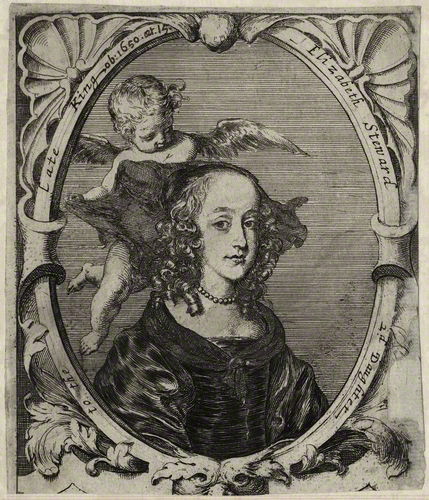
Princess Elizabeth of England (1635 – 1650)
Elizabeth was only seven-years-old when the English Civil War broke out. From that time until her death in 1650, Elizabeth and her brother Prince Henry, Duke of Gloucester were basically held as prisoners of the English Parliament. Over the coming years, Parliament assigned their guardianships to several nobles. Elizabeth spent her time studying languages and theology. On January 29, 1649, Elizabeth and Henry met with their father for the last time. King Charles I was beheaded the next day. Elizabeth wrote a moving account of her last meeting with her father. In 1650, Elizabeth’s eldest brother, the titular King Charles II, traveled to Scotland to be crowned. In response, Parliament moved Elizabeth to the Isle of Wight despite Elizabeth complaining that she was not well enough to travel. During the move to the Isle of Wight, Elizabeth caught a cold that quickly developed into pneumonia, causing her death at the age of fifteen.
********************

Princess Anne of England (1637 – 1640)
From her birth, Anne was not healthy. It is likely that she developed tuberculosis, causing her death when she was only three years old. Apparently, Anne was a precocious child. As she lay dying, her nurse told her to say her prayers. Anne replied that she could not say her long prayer, meaning the Lord’s Prayer, but that she could say her short prayer, “Lighten mine eyes, O Lord, lest I sleep the sleep of death.”
********************
Princess Catherine of England (born and died 1639)
Catherine was born on June 29, 1639, and died the same day, an hour after her christening.
********************
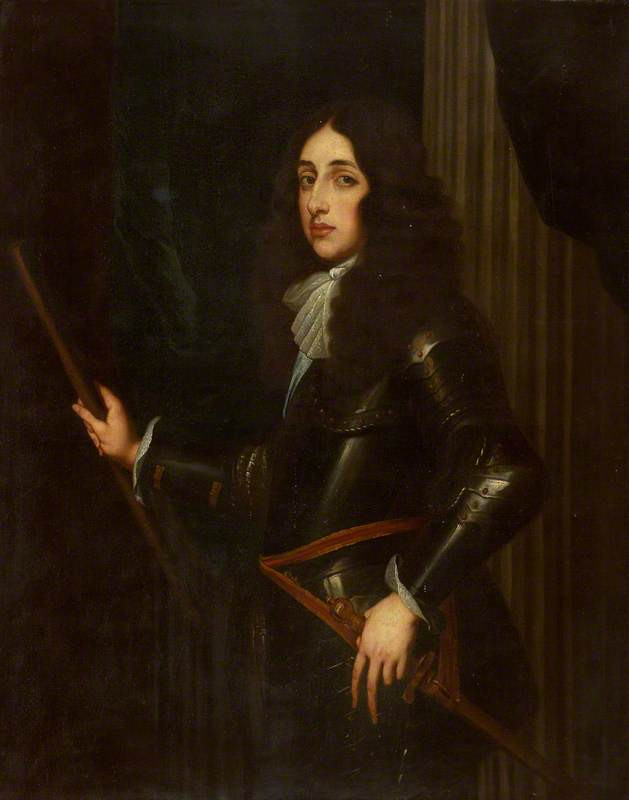
Prince Henry, Duke of Gloucester (1640 – 1660)
Henry was only two years old when the English Civil War broke out. Along with his elder sister Elizabeth, he was basically held as a prisoner of the English Parliament. Over the coming years, Parliament assigned their guardianships to several nobles. On January 29, 1649, Elizabeth and Henry met with their father for the last time. King Charles I was beheaded the next day. In 1652, two years after the death of his sister Elizabeth, Henry was released and sent to his sister Mary in the Dutch Republic. Following the restoration of the monarchy in England in 1660, Henry accompanied his brother Charles II to England. However, in September 1660, Henry contracted smallpox during a London epidemic and died before Charles II’s coronation.
********************

Princess Henrietta of England, Duchess of Orléans (1644 – 1670)
About a month after Henrietta’s birth, her mother Henrietta Maria went to France to ask her nephew, King Louis XIV, for assistance for the Royalist side in the English Civil War. Henrietta was left in the care of Lady Dalkeith (born Anne Villiers, the daughter of Sir Edward Villiers). In 1646, Lady Dalkeith disguised herself and Henrietta as peasants and fled to France, reuniting Henrietta with her mother. Henrietta was brought up at the French court. In 1661, she married her first cousin Philippe I, Duke of Orléans, the only sibling of King Louis XVI of France. Philippe had homosexual affairs, but apparently, he was intent on fulfilling his dynastic responsibility of having children, and the couple had three children.
On June 29, 1670, Henriette-Anne drank a glass of iced chicory water and immediately felt severe pain in her side. She thought she had been poisoned and asked to be given an antidote. Henrietta died the next day at the age of twenty-six. There were rumors that her husband’s lover Philippe, Chevalier de Lorraine had poisoned her. An autopsy showed that she died from “cholera morbus caused by heated bile” which was a medical diagnosis at the time for acute gastroenteritis occurring in summer and autumn with severe cramps, diarrhea, and vomiting. Many of the autopsy observers disagreed with this diagnosis.
Henrietta is an ancestor of the royal families of Belgium, Luxembourg, and Spain. When the line of her brother King James II of England died out, the Jacobite claims to the British throne descended from her daughter Anne Marie d’Orléans, Queen of Sardinia. The Orléanist pretenders to the French throne and the Savoy pretenders to the Italian throne descend from Henrietta.
- Unofficial Royalty: Princess Henrietta of England, Duchess of Orléans
- Unofficial Royalty: The Jacobite Succession – Pretenders to the British Throne
********************
Maternal First Cousins
Maternal First Cousins: Children of Felipe IV, King of Spain and his first wife Princess Elisabeth of France
See above – Paternal First Cousins: Children of Princess Elisabeth of France and Felipe IV, King of Spain
********************
Maternal First Cousins: Children of Felipe IV, King of Spain and his second wife Archduchess Mariana of Austria

Margarita Teresa of Austria, Infanta of Spain, Holy Roman Empress (1651 – 1673)
Margarita Teresa was the first child of Felipe IV, King of Spain from his second marriage with his niece Archduchess Mariana of Austria, the daughter of his sister Maria Anna of Spain and Ferdinand III, Holy Roman Emperor. In 1666, fifteen-year-old Margarita Teresa married Leopold I, Holy Roman Emperor who was her maternal uncle and paternal cousin. During her six years of marriage, Margarita Teresa gave birth to four children but only one survived infancy. Weakened by six pregnancies in six years (four living births and two miscarriages), 21-year-old Margarita Teresa died four months into her seventh pregnancy.
********************
Maria Ambrosia de la Concepción of Austria, Infanta of Spain (born and died 1655)
Maria Ambrosia lived for only two weeks. She was born on December 7, 1655, and died on December 21, 1655.
********************

Felipe Prospero of Austria, Infante of Spain, Prince of Asturias (1657 – 1661)
Felipe Prospero’s father Felipe IV, King of Spain, had no male heir since the death of Balthasar Charles, his son by his first wife, Elisabeth of France, eleven years earlier, and so the birth of Felipe Prospero was a joyous event. However, it soon became evident that Felipe Prospero had health issues and was frequently ill, possibly from a defective immune system from generations of inbreeding. On November 1, 1661, he died following a severe epileptic attack, four weeks before his fourth birthday.
********************
Fernando of Austria, Infante of Spain (1658 – 1659)
Fernando was born on December 23, 1658, and died ten months later on October 22, 1659.
********************
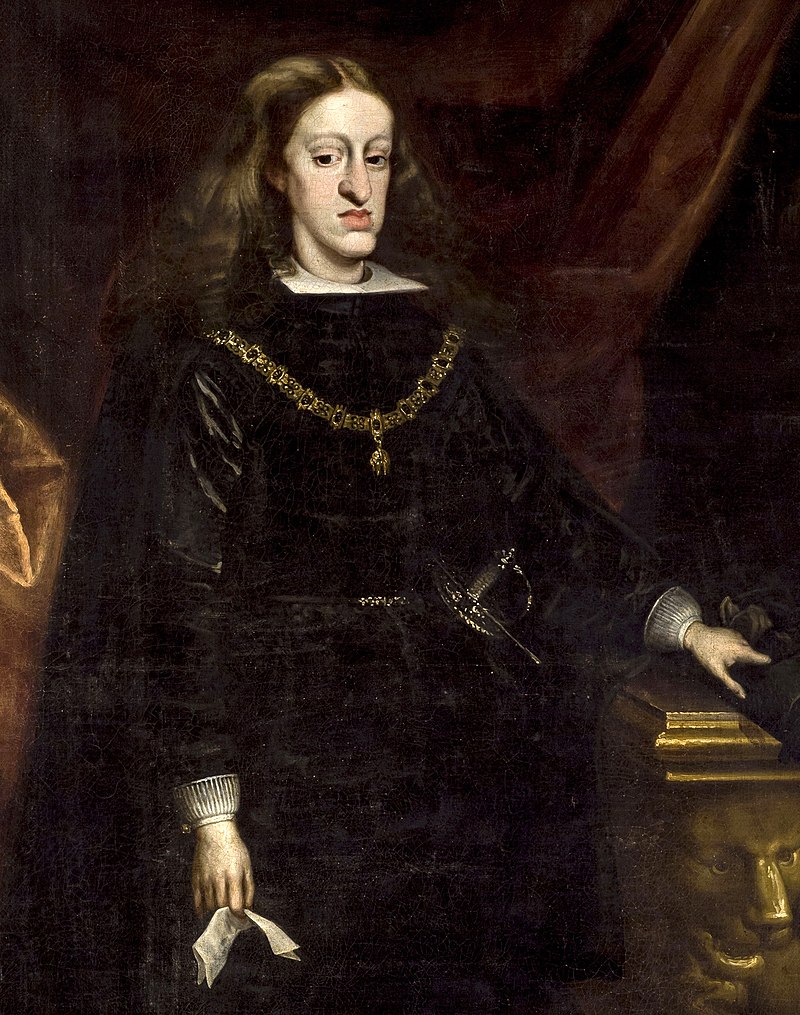
Carlos II, King of Spain (1661 – 1700)
With the birth of Carlos, his father Felipe IV, King of Spain, had a male heir. However, due to inbreeding, Carlos had many problems. Of eleven marriages made by Spanish monarchs between 1450 and 1661, the vast majority were between close relatives. Carlos had the “Habsburg jaw”, and this was so pronounced in Carlos that he swallowed his food nearly whole because he could not thoroughly chew it. In 1665, the not-quite four-year-old Carlos became King of Spain upon the death of his father. His mother Archduchess Mariana of Austria served as regent.
Carlos was educated by priests, but because of his poor health, it was expected that he would not live long and so his education in government tasks was neglected. When Carlos was twenty, the papal nuncio described him: “He can’t straighten his body except when he walks, unless he leans against a wall, a table or something else. His body is as weak as his mind. From time to time he shows signs of intelligence, memory, and a certain liveliness, but usually, he has a slow and indifferent look, clumsy and indolent, seeming dumbstruck.” Carlos II married twice but both marriages were childless.
Carlos lived to be thirty-eight years old, the last King of Spain from the House of Habsburg. King Louis XIV of France’s son Louis, Le Grand Dauphin had the strongest genealogical claim to the throne of Spain because his mother Maria Teresa, Infanta of Spain had been the half-sister of Carlos II. However, neither Louis, Le Grand Dauphin nor his eldest son Louis, Duke of Burgundy, could be displaced from their place in the succession to the French throne. Therefore, Carlos II, King of Spain, in his will, named Louis, Le Grand Dauphin’s second son, 16-year-old Philippe, Duke of Anjou, as his successor. He reigned as Felipe V, the first of the Bourbon kings of Spain.
********************
Maternal First Cousins: Children of Maria Anna of Austria, Infanta of Spain and Ferdinand III, Holy Roman Emperor

Ferdinand IV, King of the Romans (1633 – 1654)
In 1653, Ferdinand III, Holy Roman Emperor had his eldest son Ferdinand crowned as King of the Romans as the de facto heir to the Holy Roman Empire, despite Holy Roman Emperor being an elected position. A year later, the younger Ferdinand died from smallpox.
********************

Archduchess Mariana of Austria, Queen of Spain (1634 – 1696)
In 1649, 14-year-old Mariana married her 44-year-old uncle Felipe IV, King of Spain as his second wife in hopes of producing a male heir. Their children (listed above under Maternal First Cousins: Children of Felipe IV, King of Spain and his second wife Archduchess Mariana of Austria) were also first cousins of King Louis XIV through their father. Felipe IV was succeeded by his nearly four-year-old son Carlos II (see above). Because of Carlos II’s mental and physical condition, Mariana was regent for the rest of her life except for 1677 – 1679.
********************
Archduke Philipp August of Austria (1637 – 1639)
Philipp August was born on July 15, 1637, and died nearly two years later, on June 22, 1639.
********************
Archduke Maximilian Thomas of Austria (1638 – 1639)
Maximilian Thomas was born on December 21, 1638, and died six months later on June 29, 1639.
********************

Leopold I, Holy Roman Emperor (1640 – 1705)
Leopold I was Holy Roman Emperor and King of Hungary, Croatia, and Bohemia. Elected in 1658, Leopold ruled the Holy Roman Empire until his death in 1705, becoming the longest-ruling Habsburg Holy Roman Emperor (46 years and 9 months). He married three times and had a total of sixteen children including Joseph I, Holy Roman Emperor, Charles VI, Holy Roman Emperor, and Archduchess Maria of Austria who married her first cousin of João V, King of Portugal.
********************
Archduchess Maria of Austria (born and died 1646)
Maria was born and died on May 13, 1646.
********************
This article is the intellectual property of Unofficial Royalty and is NOT TO BE COPIED, EDITED, OR POSTED IN ANY FORM ON ANOTHER WEBSITE under any circumstances. It is permissible to use a link that directs to Unofficial Royalty.
Works Cited
- Lundy, D. (2022). Main Page. [online] Thepeerage.com. Available at: http://www.thepeerage.com/. (for genealogy information)
- Unofficial Royalty. (2022). Unofficial Royalty. [online] Available at: https://www.unofficialroyalty.com. (for biographical and genealogy information)
- Wikipedia. (2022 Main Page. [online] Available at: https://en.wikipedia.org/. (for biographical and genealogy information)





